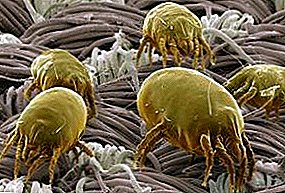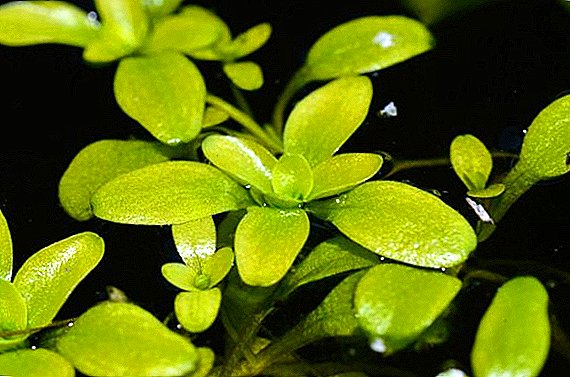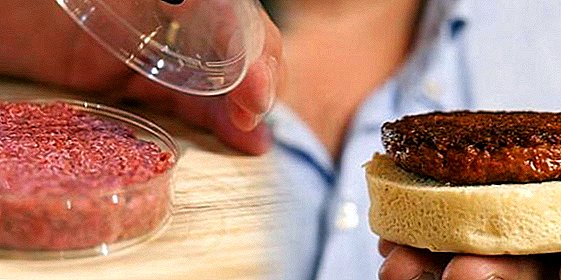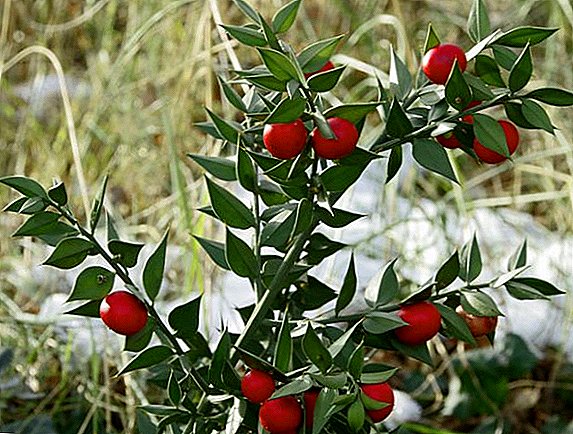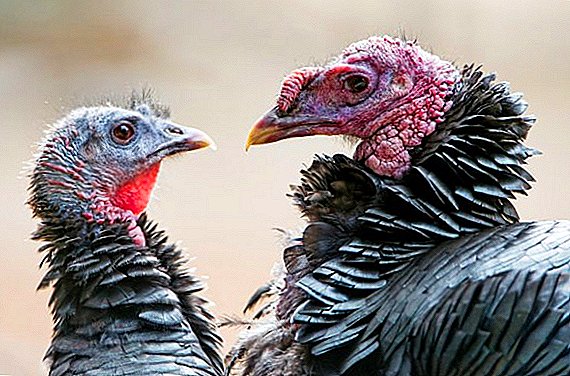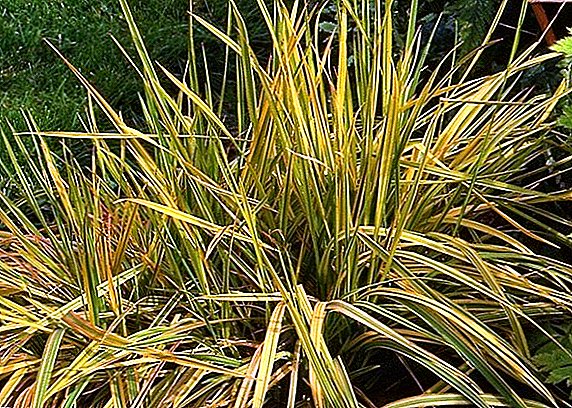 A meadow plant called foxtail has long established itself as an unpretentious inhabitant of cold and temperate climatic regions, whose properties have long been successfully used in various spheres of human activity.
A meadow plant called foxtail has long established itself as an unpretentious inhabitant of cold and temperate climatic regions, whose properties have long been successfully used in various spheres of human activity.
Botanical description
Meadow foxtail (Alopecurus pratensis) refers to perennial cereals, reaching a height of about 50-110 cm. Bush densely leafy, has long creeping roots. The stems are elongated elongated, have a smooth surface. In addition to generative shoots, small shoots with sufficiently long foliage can also be located on an adult bush. The leaves of the plant are elongated, narrow, dark green, reach a length of 25 cm. 
Foxtail begins to bloom in June, and seed ripening occurs in July. Since it blooms from 4-5 to 7-8 o'clock in the morning, then it belongs to the number of "morning cereals." The inflorescence is presented in the form of a cylindrical elongated panicle, which has a grayish tint. The length of this inflorescence is 10-12 cm.
Did you know? The foxtail was introduced into culture at the end of the 18th century, however, it only became popular as a production plant in the 20th century.

The whisk itself consists of a large number of spikelets having a large elliptical shape. The fruit is presented in the form of oblate caryops, having a length of 4-6 mm. Foxtail begins to bear fruit in the second year after disembarkation, pollination mainly occurs by wind. The period of flowering cereal - 13-17 days.
Did you know? The plant received this name due to its shape and appearance during the flowering period, as the inflorescence visually resembles the fox's tail due to the large number of orange stamens.

Application
The popularity of this plant lies in the fact that it can be used in various fields of human activity.
As feed
Such a grass is early ripening and has received a good distribution as feed for livestock. Thanks excellent feeding and digestibility animals eat it easily, while receiving all the necessary vitamins and minerals. For this foxtail and is among the best grasses.
The meadow foxtail is often used to create cultivated pastures, combining it with meadow bluegrass, fescue (meadow, blue-gray or red), feather grass, timothy grass, hedgehog and couch grass.
This plant produces excellent hay, which is not inferior in quality to other selective cultures. Harvest it should be at the beginning of flowering cereal. Best of all this hay is suitable for cattle, a little worse for sheep and goats. 
Medicinal plant
In medicine, foxtail is most often used to prepare various decoctions that help in the treatment of various types of diseases. If you are worried about rheumatism or skin diseases, then the baths from this cereal will help you as well as possible and will produce an effective effect. You can also use a fox wrap for colds.
The healing properties of this plant are also manifested in improved blood circulation and vascular strengthening. In addition, it generally strengthens the entire human circulatory system.
Ornamental plant growing
If you are interested in how to make your garden unusual and attractive, then you will certainly be helped by the use of the meadow foxtail. It goes well with other cereals, making the design of the whole garden stylish and elegant. It is also used in the design of borders, personal plots, flower beds and lawns.

Do not forget about this cereal when creating decorative bouquets - it will perfectly complement the composition, giving it an unusual shape and appearance. Most often, foxtail is used to create lawns, including sports ones.
Cereal plants, including foxtail, are used to design the edges of flower beds and garden paths, rock arias, alpine slides and mixborders. This plant can add comfort to a gazebo or pergolas.
Features agrotehnika
Meadow foxtail is an unpretentious, but at the same time quite demanding plant. It needs proper care and certain environmental conditions. 
Choice of soil and location
Soil required must be drained and rich in humus. An ideal place for the growth of such grass will be wet meadow areas and garden lawns, peatlands, clay or sandy soils. The plant suffers a drought poorly, the main thing for its successful growth and development is a sufficient level of humidity and good solar lighting.
Important! Although the meadow foxtail is not particularly capricious, improper care and failure to comply with all the rules can lead to the loss of its luster and natural beauty.
Reproduction and planting
Foxtail breeding occurs in two ways: root layering or seed. Of course, the first method is more common among gardeners, since it is much easier and faster to buy and plant root layers in rolls than to grow cereal from seeds, which takes about four years on average. 
Planting grass consists of several stages:
- At the preparatory stage it is necessary to carry out the treatment of the soil with the help of herbicides.
- Two weeks after treatment, the soil must be plowed.
- If you grow a plant from seed, then sow them in even rows. You can use both cover and blotch seeding.
Important! If you want to grow thick grass from a foxtail, then at least 350 plants of this type should be located on one square meter.
How to care for culture
Caring for such a cereal consists of regular watering, fertilizer and cultivation.
Watering foxtail crops should be regularly, as the topsoil dries. Plant constantly needs moisturizing: even a small lack of moisture will lead to deterioration of its condition and appearance. 
Fertilizing the grass should be carried out before the beginning of the growing season. Add mineral fertilizers in the following proportions: superphosphate - 3 centners, potash fertilizers - 1 centner, calculated per 1 hectare of sowing. Nitrogen fertilizers can also be used, namely ammonium nitrate in the calculation of 1 centner per 1 ha.
Harvest
By the end of June foxtail seeds ripen. They should be cleaned only in the wax ripeness phase of the given cereal. Such a period is determined precisely by the color of the plant itself, when it acquires a green tint. At the same time, some seeds on individual stems begin to crumble. Seeds are light, flat, membranous, have small hard spikes. 
An important aspect of foxtail harvest is that it can only be done in the second year of its fruiting. Consider also the purpose for which the harvest occurs. If you want to use it for hay, then do two collections, if for the preparation of grass meal, then in general there are three. It all depends on the growth rate and the length of the cereal. Regrowth will occur quickly if the cut foxtail has a height of at least 5 cm.
Do not forget also that the harvest needs special treatment. To separate large impurities from small ones, carry out a rough cleaning of the heap of cereal. If the pile is a little bit wet, you need to carry out its drying with the help of ventilation. After that, the primary and main cleaning of the collected foxtail can be carried out. 
Having learned in more detail and having studied the description of such a plant as a meadow foxtail, one can single out a large number of its positive aspects: good germination, unpretentiousness and a wide range of applications. By choosing such a grass for growing in your garden, you will receive not only an excellent decorative ornament, but also a nutritious top dressing for livestock, as well as a plant with unique medicinal and preventive properties.


